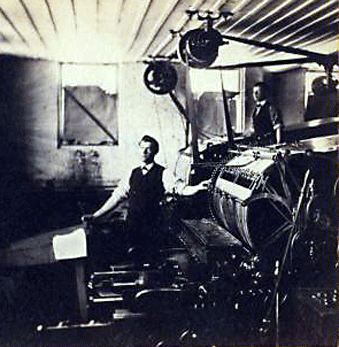


Joshua Heineman of Cursive Buildings made wonderful animations of stereoscopic images from the New York Public Library – visit his site to see more in action, they’re wonderful.
20 thoughts on “Animated stereoscopic images”
Comments are closed.
ADVERTISEMENT
Support Make:
Join Make: Community Today
Join Make: Community Today









wow – good idea, and so simple!
it only took me four guesses to find the right link (grrr)
So simple? How does he do it?
Animated gif going back and forth between the two stereo images I guess? Could you do this technique with a flipbook?
I’ve had pretty good success with taking stereo images with a digital slr just by taking a picture then moving the camera a few inches over and taking another (obviously doesn’t work with moving subject).
I found a collection of old stereoscopic photos from around where I was living, the Boulder, Colorado area, awhile ago. Did the same trick of animating them after seeing this site, http://www.well.com/~jimg/stereo/stereo_list.html
I even tried to go and re-photograph the same spot as the original photo to see the changes after 100 years. Just freehanded the camera, so the stereo animation didn’t work quite as well as I could have hoped, but it was fun. http://www.nederspace.com/?p=35
Now I’m inspired to go try again with a little more attention to taking better photos!
Looks like an old Wang Chung video
easy to make.. take some stereoscopic images, cut them in half, then use any gifmaking program to rapidly flash between the two images.
Is this a new idea? I’ve been a fan of 3D photography for a long time and I’ve never heard of it. It’s so simple and works so well.
Absolutely Amazing! It took only 5 Minutes to build my own 3D-animation (including taking the photos and starting The Gimp ;-). Great!
See my first Animation here: http://www.hobby-garten-blog.de/
What if you took two interlaced video cameras and placed them next to each other and recorded a scene. You then striped the upper field from one and the lower field from another and then combined the two video streams via a smoothing and recombination process?
Alternatively, you take two video cameras that films at 30p or 24p and then alternate frames between the two images. Any ideas of what would occur?